1. Angle EH. Classification of malocclusion. Dental Cosmos. 1899; 41:248–264.
2. Thüer U, Ingervall B. Pressure from the lips on the teeth and malocclusion. Am J Orthod Dentofacial Orthop. 1986; 90:234–242.

3. Jenny J, Cons NC. Comparing and contrasting two orthodontic indices, the Index of Orthodontic Treatment need and the Dental Aesthetic Index. Am J Orthod Dentofacial Orthop. 1996; 110:410–416.

4. Dolce C, Mansour DA, McGorray SP, Wheeler TT. Intrarater agreement about the etiology of Class II malocclusion and treatment approach. Am J Orthod Dentofacial Orthop. 2012; 141:17–23.

5. Coelho Filho CM. Mandibular protraction appliances for Class II treatment. J Clin Orthod. 1995; 29:319–336.
6. Kim YH. Tratamiento de maloclusiones severas mediante la técnica de alambre Edgewise Multiloop (Multiloop Edgewise Arch-Wire, MEAW). Ortodoncia Clínica. 2004; 7:22–34.
7. WHO. Oral Health Surveys: Basic Methods. Geneva, Switzerland: World Health Organization;1997.
8. Ghafari J, Shofer FS, Jacobsson-Hunt U, Markowitz DL, Laster LL. Headgear versus function regulator in the early treatment of Class II, Division 1 malocclusion: a randomized clinical trial. Am J Orthod Dentofacial Orthop. 1998; 113:51–61.

9. Wong L, Hägg U, Wong G. Correction of extreme overjet in 2 phases. Am J Orthod Dentofacial Orthop. 2006; 130:540–548.

10. Stahl F, Baccetti T, Franchi L, McNamara JA Jr. Longitudinal growth changes in untreated subjects with Class II Division 1 malocclusion. Am J Orthod Dentofacial Orthop. 2008; 134:125–137.

11. Baccetti T, Stahl F, McNamara JA Jr. Dentofacial growth changes in subjects with untreated Class II malocclusion from late puberty through young adulthood. Am J Orthod Dentofacial Orthop. 2009; 135:148–154.

12. Mihalik CA, Proffit WR, Phillips C. Long-term follow-up of Class II adults treated with orthodontic camouflage: a comparison with orthognathic surgery outcomes. Am J Orthod Dentofacial Orthop. 2003; 123:266–278.

13. Ruf S, Pancherz H. Orthognathic surgery and dentofacial orthopedics in adult Class II Division 1 treatment: mandibular sagittal split osteotomy versus Herbst appliance. Am J Orthod Dentofacial Orthop. 2004; 126:140–152.

14. Bock NC, von Bremen J, Ruf S. Occlusal stability of adult Class II Division 1 treatment with the Herbst appliance. Am J Orthod Dentofacial Orthop. 2010; 138:146–151.

15. Janson G, Valarelli FP, Cançado RH, de Freitas MR, Pinzan A. Relationship between malocclusion severity and treatment success rate in Class II nonextraction therapy. Am J Orthod Dentofacial Orthop. 2009; 135:274.e1–274.e8.

16. Johnston LE Jr. A comparative analysis of Class II treatments. In : Vig PS, Ribbens KA, editors. Science and clinical judgment in orthodontics. Monograph 19, Craniofacial Growth Series. Ann Arbor: Center for Human Growth and Development, The University of Michigan;1986.
17. Janson I. Skeletal and dentoalveolar changes in patients treated with a bionator during prepubertal and pubertal growth. In : McNamara JA, Ribbens KA, Howe RP, editors. Clinical alteration of the growing face. Monograph 14, Craniofacial Growth Series. Ann Arbor: Center for Human Growth and Development, The University of Michigan;1983.
18. Janson G, Barros SEC, de Freitas MR, Henriques JFC, Pinzan A. Class II treatment efficiency in maxillary premolar extraction and nonextraction protocols. Am J Orthod Dentofacial Orthop. 2007; 132:490–498.

19. Xu TM, Liu Y, Yang MZ, Huang W. Comparison of extraction versus nonextraction orthodontic treatment outcomes for borderline Chinese patients. Am J Orthod Dentofacial Orthop. 2006; 129:672–677.

20. Coelho Filho CM. Mandibular protraction appliance IV. J Clin Orthod. 2001; 35:18–24.
21. Ruf S, Pancherz H. Dentoskeletal effects and facial profile changes in young adults treated with the Herbst appliance. Angle Orthod. 1999; 69:239–246.
22. Ruf S, Pancherz H. Temporomandibular joint remodeling in adolescents and young adults during Herbst treatment: A prospective longitudinal magnetic resonance imaging and cephalometric radiographic investigation. Am J Orthod Dentofacial Orthop. 1999; 115:607–618.

23. Kinzinger G, Diedrich P. Skeletal effects in class II treatment with the functional mandibular advancer (FMA)? J Orofac Orthop. 2005; 66:469–490.

24. Nalbantgil D, Arun T, Sayinsu K, Fulya I. Skeletal, dental and soft-tissue changes induced by the Jasper Jumper appliance in late adolescence. Angle Orthod. 2005; 75:426–436.
25. Ruf S, Pancherz H. Herbst/multibracket appliance treatment of Class II division 1 malocclusions in early and late adulthood. a prospective cephalometric study of consecutively treated subjects. Eur J Orthod. 2006; 28:352–360.

26. Popowich K, Nebbe B, Heo G, Glover KE, Major PW. Predictors for Class II treatment duration. Am J Orthod Dentofacial Orthop. 2005; 127:293–300.

27. Herrera FS, Henriques JF, Janson G, Francisconi MF, de Freitas KM. Cephalometric evaluation in different phases of Jasper jumper therapy. Am J Orthod Dentofacial Orthop. 2011; 140:e77–e84.

28. Franchi L, Baccetti T, McNamara JA Jr. Mandibular growth as related to cervical vertebral maturation and body height. Am J Orthod Dentofacial Orthop. 2000; 118:335–340.


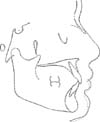

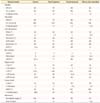




 PDF
PDF ePub
ePub Citation
Citation Print
Print



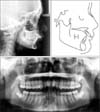
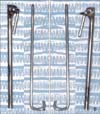

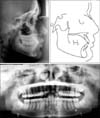

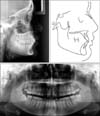
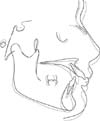
 XML Download
XML Download